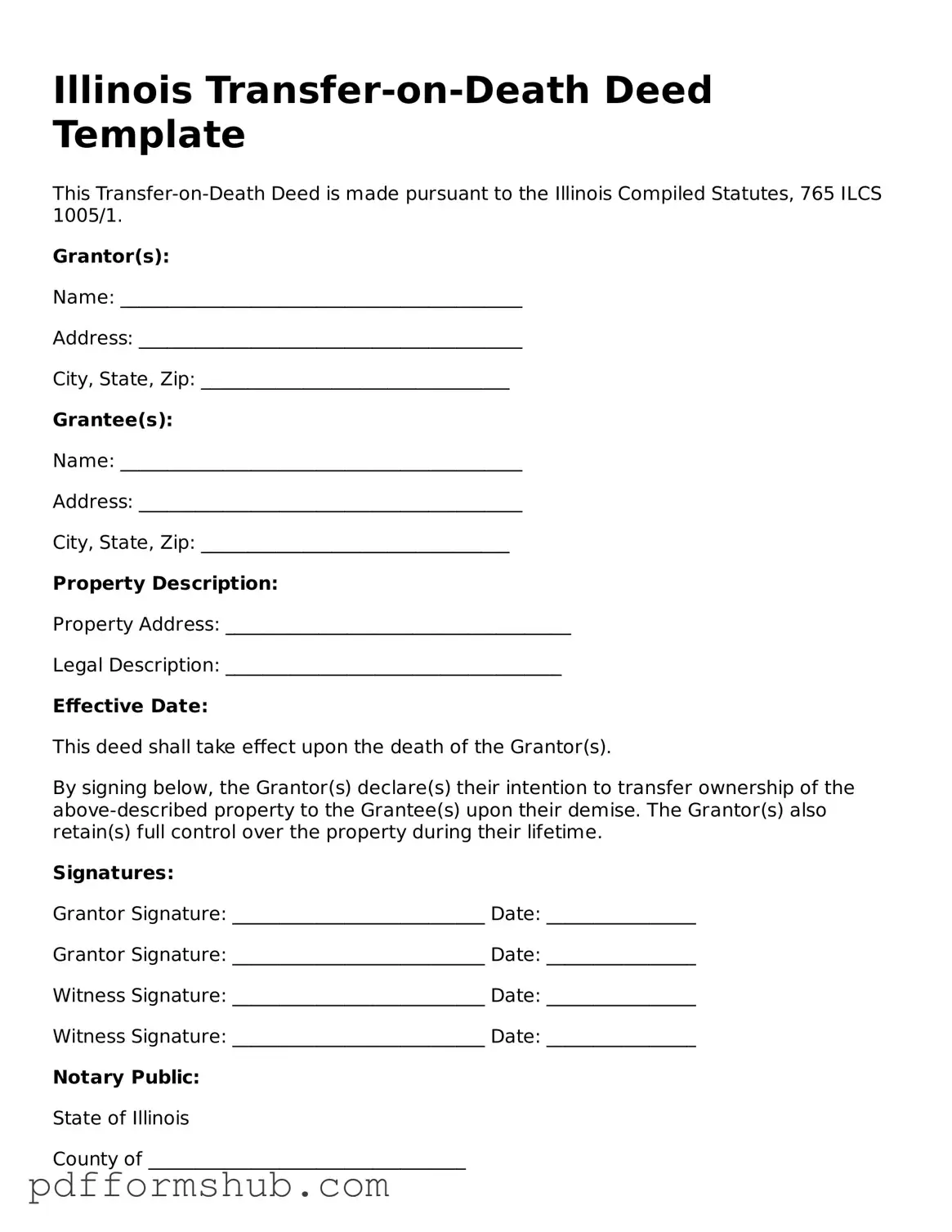Attorney-Verified Transfer-on-Death Deed Form for Illinois State
The Illinois Transfer-on-Death Deed form allows property owners to transfer their real estate to designated beneficiaries upon their death, avoiding the lengthy probate process. This simple yet powerful tool can provide peace of mind and ensure your wishes are honored. Ready to secure your property for your loved ones? Fill out the form by clicking the button below.
Customize Form
